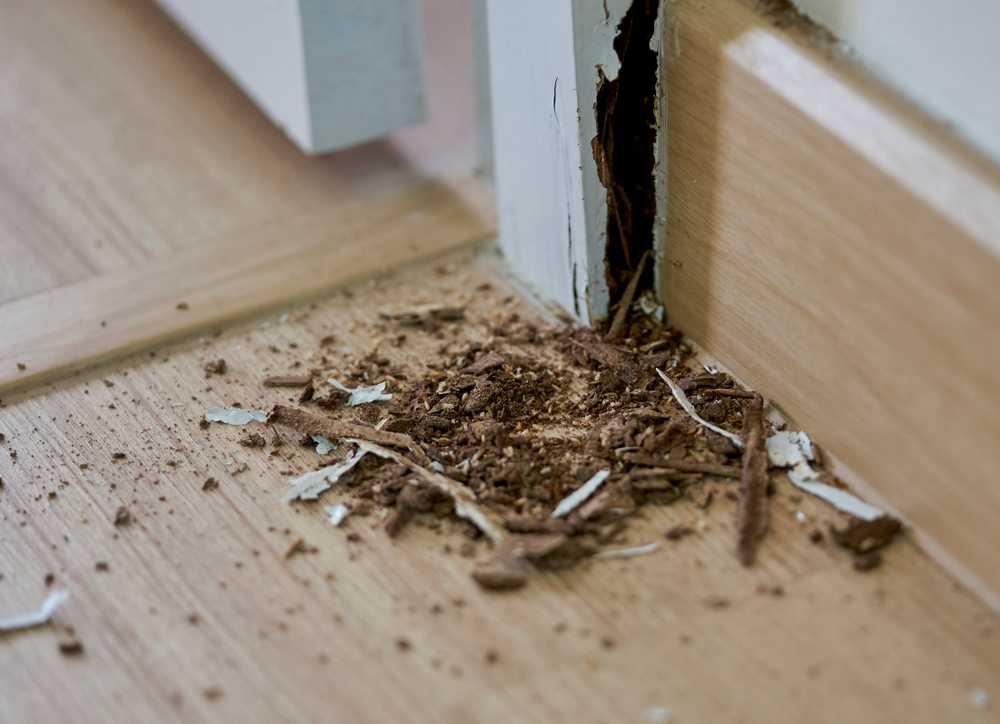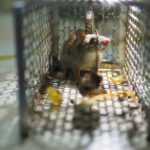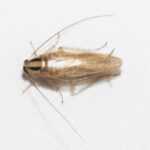Wood Termites 101: Identifying, Preventing, and Eliminating Wood-Destroying Pests
Wood termites can cause serious damage to your home. Learn how to identify them, prevent infestations, and treat existing problems. Keep your property safe with our guide.
- Termites, including drywood, dampwood, and subterranean types, differ in their habitat and behavior, which is vital for effective identification and control.
- Early detection of termite infestations is crucial, with signs including frass, crumbled wood, or swarmers, necessitating immediate action from pest control professionals.
- Preventive measures such as moisture control, chemical treatments, and using naturally resistant wood species are essential in protecting structures from termite damage.
Understanding Wood Termites
Termites are small but mighty insects that primarily feed on cellulose, found in wood and other organic materials. There are three main types of termites commonly found in the U.S.: subterranean, drywood, and dampwood termites. Each type has unique characteristics and behaviors.
Drywood termites infest dry wood directly and do not require soil contact for survival. They can enter homes through gaps in wood or infested wooden furniture, making them particularly challenging to detect and control. Additionally, dry wood termites can cause significant damage if left untreated.
On the other hand, dampwood termites thrive in other wood with high moisture content and are often found in decaying logs or areas with plumbing leaks. These termites are significantly larger than other species, typically measuring between 3/4 inch and 1 inch in length.
Subterranean termites establish colonies in soil and create mud tubes to access wood sources above ground. These mud tubes help them maintain moisture and avoid exposure to the air, which can be fatal for them.
Understanding the differences between these types of termites is crucial for effective termite control and prevention.
Drywood Termites: The Hidden Invaders
Drywood termites are the stealthy invaders of the termite world. They thrive in warm, humid environments and prefer dry wood above ground. Unlike subterranean termites, drywood termites do not need soil contact to survive. They can enter your home through small gaps in wood or even infested wooden furniture. Once inside, they can remain undetected for months or even years.
One of the telltale signs of a drywood termite infestation is the presence of frass, a sawdust-like material that these termites leave behind as they burrow through wood. You might also find discarded wings near windows and doors, indicating that swarmers have emerged from their colony. In Southern California, drywood termites are particularly destructive and hard to detect, often causing significant damage before their presence is noticed.
The Western drywood termite (Incisitermes minor) is the most common species of drywood termite in California. They cause damage by burrowing and warping wood, making it essential to be vigilant for signs of their presence. If you notice small piles of droppings or discarded wings, it’s time to call a professional to assess the situation and implement effective termite control measures.
Dampwood Termites: Moisture-Loving Destroyers
Dampwood termites are aptly named for their love of moisture. These termites thrive in environments with high moisture levels, often infesting wood that has been damaged by water. They prefer wood that is decaying, as it typically contains more moisture, making it easier for them to digest.
Unlike other termite species, dampwood termites do not create mud tubes. Instead, they live inside the wood they consume and seal entry points with their droppings. These termites are often found in residential areas where there are plumbing leaks or drainage problems leading to moisture accumulation.
If you have areas in your home with persistent moisture issues, you may be at risk of a dampwood termite infestation.
Subterranean Termites: Ground-Dwelling Menace
Subterranean termites are the underground engineers of the termite world. Their colonies can range from a few dozen individuals to over a million, depending on environmental conditions. These termites access wooden structures through mud tubes they construct, which help them maintain moisture and avoid exposure.
The foraging behavior of subterranean termites varies seasonally, with activity increasing during warmer months and after rainfall. They can cause significant damage to homes by creating extensive tunnel networks in the soil and wood. Homeowners need to be vigilant, especially in areas where subterranean termites are commonly found, such as Southern California.
Subterranean termites typically live in the soil and build their nests underground. They can enter homes through cracks in the foundation, crawl spaces, or even through concrete. Their ability to remain hidden while causing extensive damage makes them a formidable pest. Regular inspections and preventive measures are crucial to protecting your home from these ground-dwelling menaces.
Signs of a Wood Termite Infestation
Detecting a wood termite infestation early can save you from costly termite damage. Termites are more active during warmer months but can cause damage year-round. One of the most common signs of a termite infestation is maze-like patterns in wooden structures, which are evidence of their tunneling activity.
Crumbled or soft wood is another clear indicator of termite feeding behavior. You might also notice the presence of flying adults or swarmers during certain seasons, particularly for drywood termites. Discarded wings found near windows and doors indicate that swarmers have emerged from their colony.
Observing any of these signs warrants contacting a pest control company for a thorough inspection and effective control measures.
Inspection Techniques
Effective termite control starts with a thorough inspection. During visual inspections for drywood termites, you should look for feeding damage, shed wings, fecal pellets, and kickout holes. Inspectors may use tools like acoustic devices and fiber-optic cameras to enhance their ability to detect termite activity.
Professional inspectors have advanced training and techniques that improve the effectiveness of termite detection. Visual inspections are crucial in detecting termite activity before infestations can worsen.
Inspecting the entire structure, including hidden areas like crawl spaces and attics, allows inspectors to identify signs of infestations and recommend appropriate treatments.
Treatment Options for Wood Termites
When it comes to treating wood termites, there are several effective methods available. Fumigation is a comprehensive method that can eradicate all termites within the structure. This treatment involves sealing the building and introducing a fumigant gas that penetrates all areas, eliminating termites.
Heat treatments require maintaining a temperature of at least 120°F to eliminate drywood termites. This method is effective for both spot and whole-structure treatments. Localized treatments can be combined with advanced termite detection technology for effectiveness. Spot treatments may utilize various forms of insecticides, including foams, aerosols, and dusts, for targeted treatment in hard-to-reach areas.
Local infestations can be treated effectively by drilling into the infested wood and applying insecticides directly. There are two categories of drywood termite control methods. These are whole structure treatments and localized treatments. It’s important to consult with a pest control company like Gopher Patrol to determine the most suitable treatment option for your specific situation.
Preventive Measures
Preventing termite infestations is just as important as treating them. Old gutters clogged with debris can create conditions that attract dampwood termites by allowing moisture to accumulate in wall cavities. Pressure-treated wood is a commonly used strategy for preventing drywood termite infestations, but its success can depend on installation conditions.
Implementing barriers like screens and specially designed paints can help deter drywood termites, though their durability may diminish over time. Using wood species that are naturally resistant to termites can be an effective long-term measure, but availability and cost can be factors.
Chemical treatments, pressure-treated wood, barriers, and resistant wood species are all methods available for preventing drywood termite infestations. Regular maintenance and moisture control are essential to keep these wood-destroying pests at bay.
Understanding, identifying, and treating wood termites is crucial for protecting your property from extensive damage. By recognizing the signs of an infestation and implementing effective treatment and preventive measures, you can safeguard your home or business. Don’t let termites wreak havoc on your property.
Frequently Asked Questions
What are the main types of termites found in the U.S.?
The main types of termites found in the U.S. are subterranean, drywood, and dampwood termites. Understanding these types can help in effective prevention and treatment strategies.
What are the signs of a drywood termite infestation?
Signs of a drywood termite infestation include discarded wings, feces or frass, and small piles of droppings near infested wood. It is essential to identify these indicators promptly to prevent further damage.
How can I prevent a termite infestation in my home?
To prevent termite infestations, utilize pressure-treated wood, install physical barriers, and choose naturally resistant wood species. Implementing these measures can effectively safeguard your home against termites.
What treatment options are available for wood termites?
Fumigation, heat treatments, localized treatments, and wood removal are effective options for addressing wood termites. It is essential to choose the right method based on the severity of the infestation.
Why should I choose Gopher Patrol for termite control?
Choosing Gopher Patrol for termite control guarantees effective management and protection for your property through their specialized services, advanced techniques, and dedication to customer satisfaction.





